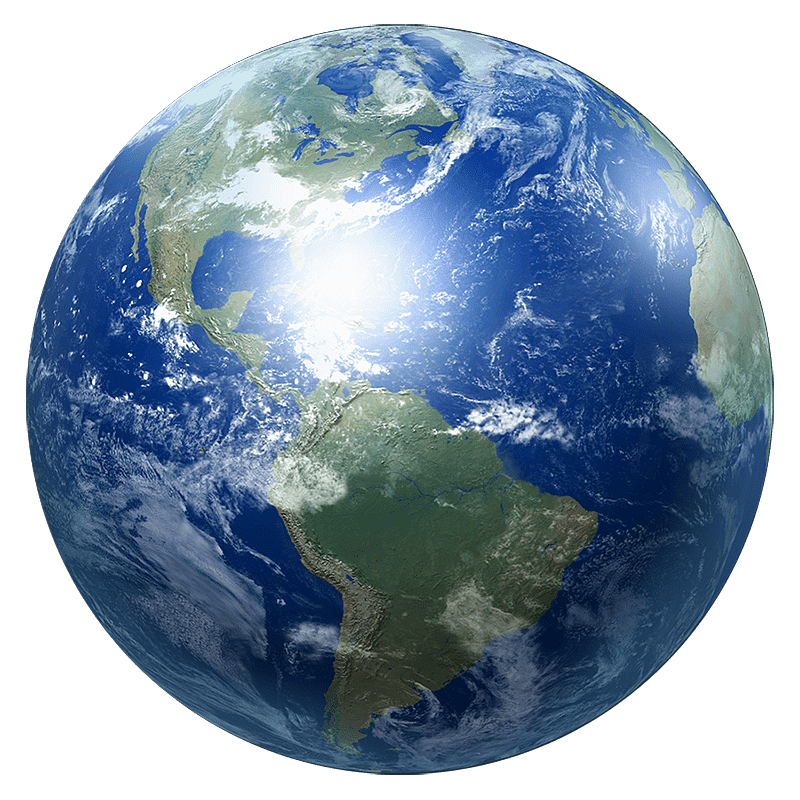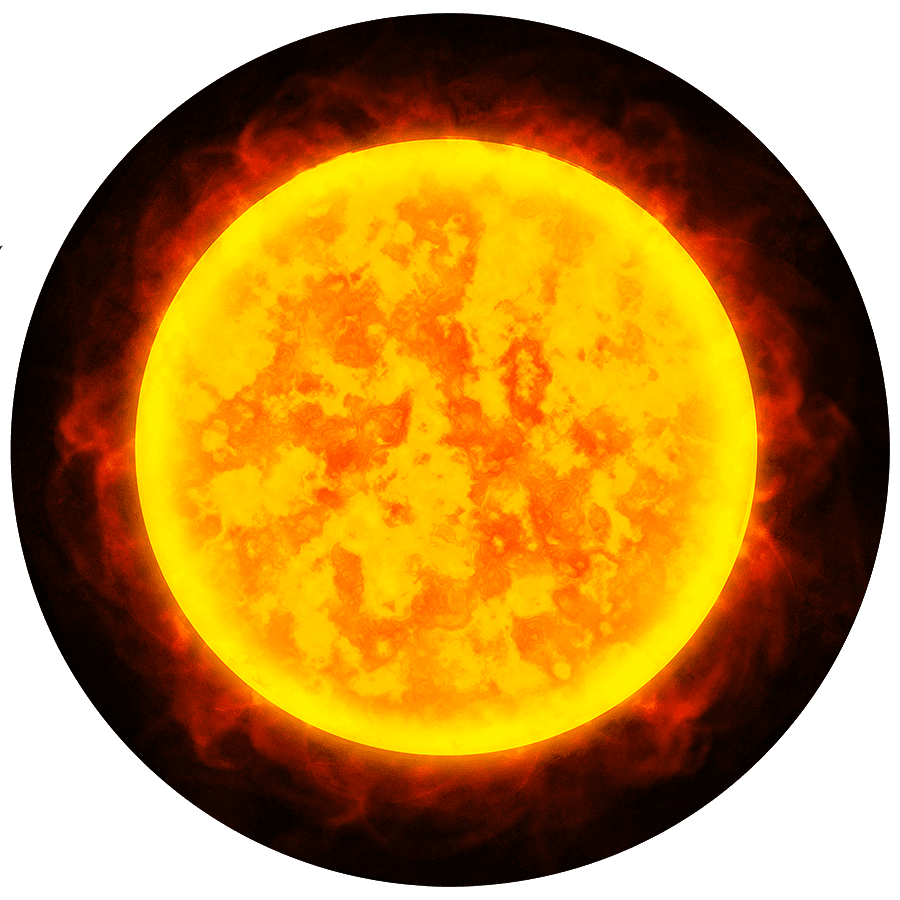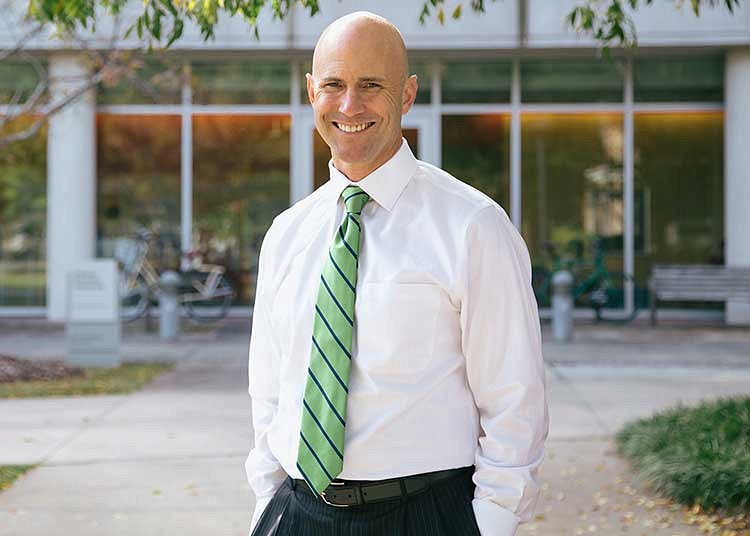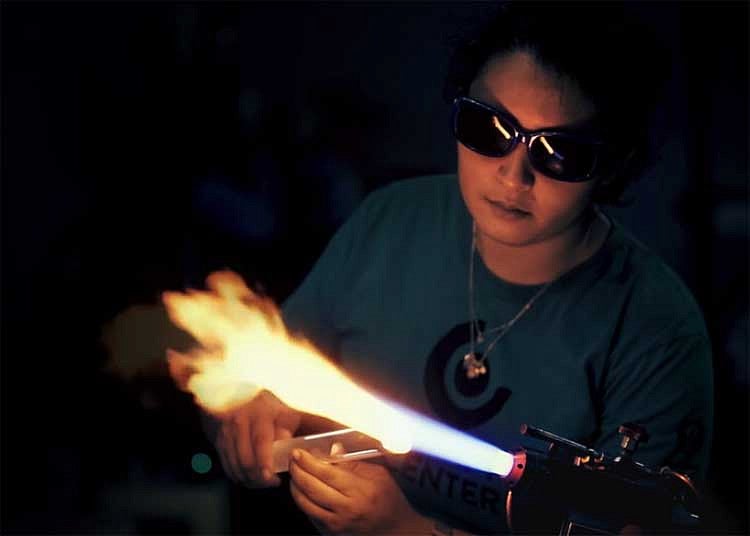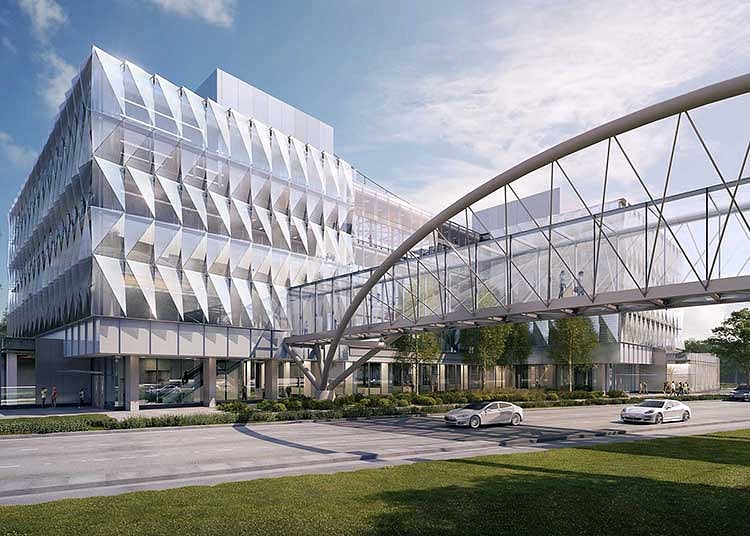The Atlantic recently referred to Christopher Hendon as “specialty coffee’s resident scientist.” Now that he’s our scientist, he’s using supercomputers to work on solving the world's most pressing energy and sustainability problems. Ready to get wired?
Espresso—it’s as Northwest as rain, bookstores, and bicycles. No wonder Christopher Hendon came here after finishing his post-doctoral research at MIT.
Hendon’s endless quest for the God Shot (i.e. perfect espresso) has led to new discoveries about grinding beans, filtering water, and more, earning the attention of the Wall Street Journal, the New York Times, Nature, and Science (not to mention the world’s top baristas).
His journey with java began in Bath, England, where he was working on his PhD. Tired of his roommate’s terrible brew, Hendon Googled “good coffee,” and discovered Colonna & Smalls, a shop that made great espresso.
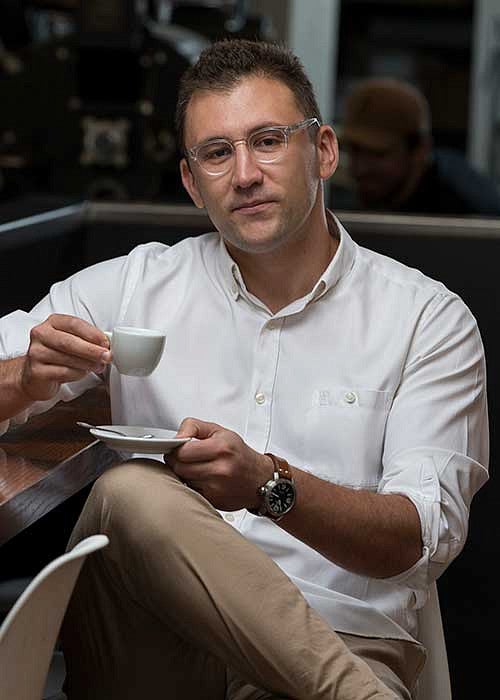
He soon befriended the store’s co-owner, Maxwell Colonna-Dashwood, and together they began to create better cappuccinos through chemistry. Colonna-Dashwood bought beans roasted all over the UK. But on one occasion he was unable to get some of them to taste right. “Which was surprising because he’s quite good (one of the best in the world) at making all coffee taste excellent,” said Hendon, whose space in the Lewis Integrative Science Building looks less like a lab and more like a typical office—except for the coffee grinder, digital coffee scale, gooseneck kettle, and selection of world class coffees. As a computational chemist, Hendon doesn’t mix actual chemicals—but he’s always happy to brew a sterling cup of Joe for visitors.
“Over the next three years, Maxwell taught me coffee and I taught him science,” he recalls. “Turns out, the problem was rooted in the chemistry of their water.” The two went on to win international barista championships, write a book, Water for Coffee, and transform the art and science of espresso worldwide.
“For whatever reason, science has stayed away from coffee for a long time,” says Hendon. “So there’s a tremendous amount of reward to be had there. I see coffee as an area where you still are doing the experimentation. You’re using your senses, so you haven’t removed the human element. What’s really neat is that you can drink your product. Which you’re not supposed to do in your undergraduate chemistry lab.”
Local roasters are buzzing about Hendon’s arrival, and he’ll continue using coffee as a way to introduce people to science. But he actually didn’t join the UO faculty to study coffee. Instead, he’s exploring energy and sustainable materials.
Hendon’s research could lead to better batteries, greener manufacturing, or hydrogen-powered cars. That might seem like a big leap from lattes, but he’ll convince you it’s not. Because all stuff on earth—coffee, water, carbon, hydrogen, and everything else—follows the same scientific principles.

“Coffee is an excellent vehicle to teach fundamental science, whether I’m teaching the barista or they’re discovering something themselves and teaching me. That’s the same motivation I have in the lab.”
—Christopher Hendon
Think Outside the Bean
What’s the connection between coffee and Hendon’s research at the UO? They both involve materials science: the chemistry and physics of things we use every day.
One of Hendon’s specialties, for instance, is porous materials—any substance with tiny holes (including coffee). A battery works by separating positive and negative ions. If scientists can figure out how to put positive ions into the microscopic holes of a material made from abundant elements like carbon and oxygen, says Hendon, that could lead to better, less-expensive batteries.
This means more than cheap AAs for your remote control. Batteries are the missing link for solar energy. “We can make a lot of energy during the day, but we need to store it somewhere for the night,” Hendon says.
Or maybe those tiny holes could hold hydrogen at low pressure—the first step in creating a fuel cell for the cars of the future.
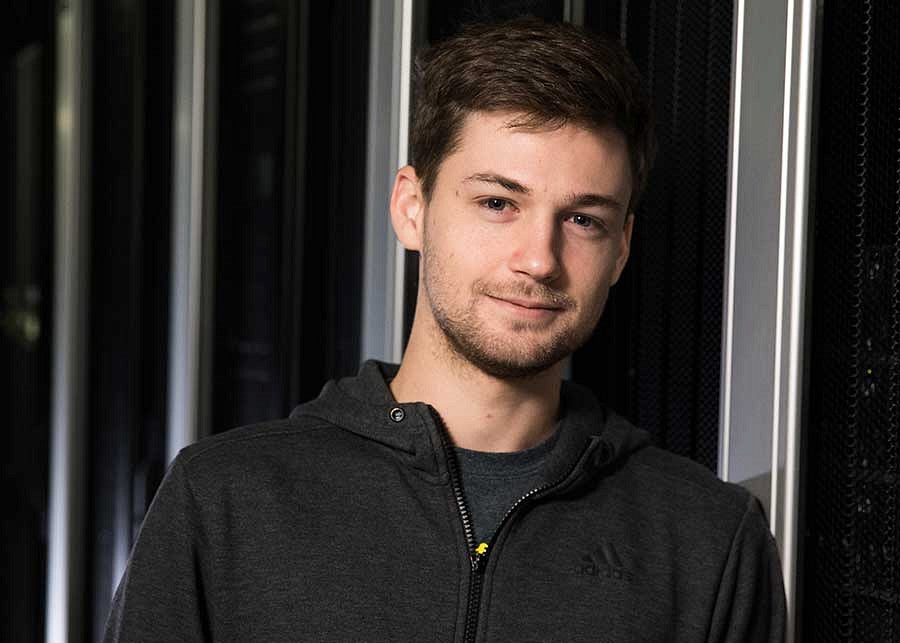
“Christopher has a lot of energy, and it’s fun and challenging to work in his lab. Because we’re using supercomputers—not chemicals—we have virtually no limits. We can conduct experiments that would be impossible to create in a traditional chemistry lab.”
—C. Chase Callahan
Senior, Chemistry
Palo Alto, California
Applied Scientists
What will it take to generate sustainable energy for a growing world? How can we meet our needs and preserve precious natural resources? By uniting different disciplines—chemistry, physics, and others—the UO’s new Energy and Sustainable Materials Initiative is facing these questions head-on, looking for practical answers.
“There was a tremendous number of faculty positions advertised this past year,” says Hendon. “But very few were so highly focused on making a collaborative atmosphere.”
More than 500 applicants vied for the first hire offered for the initiative. This interdisciplinary effort builds on the UO’s strengths in green chemistry, materials science, and sustainable materials, taking it to the next step: application. That means working together to create innovative solutions—among departments, across the hall, beyond traditional barriers.
“This research initiative will unite scientists from diverse backgrounds to bring fresh ideas and new perspectives on today’s energy problems.”
—Christopher Hendon
Everything on Earth (including us) is made of star residue. Some of that stuff is abundant. And some of it is scarce. Hendon and his team are looking for sustainable solutions to replace our need for expensive elements and use more of the planet’s plentiful materials.
Platinum is a rare element used in catalytic converters. What if a piece of something else with a thin, flat platinum surface works just as well? Researching the surface of materials could lead to lower cost catalysts or other innovations in manufacturing, says Hendon, which will help both industry and the environment.
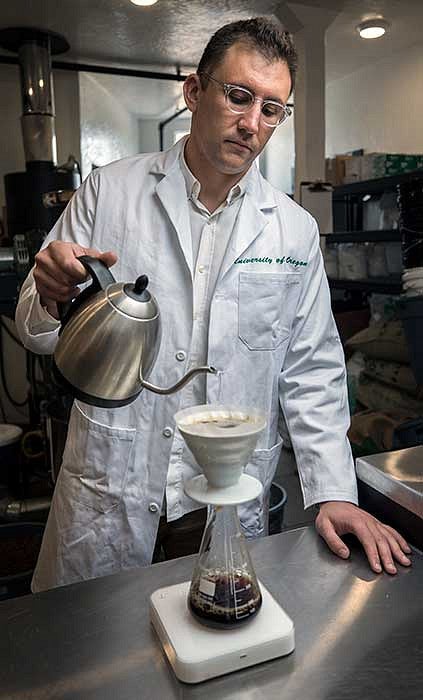
Coffee 101
Want better coffee at home? Ask Christopher Hendon that question, and you’ll get an engaging lesson on the chemistry of water, the physics of grinding, and how to apply the scientific method to your brewing routine. For example, a good scale is the key to getting the right dose of ground coffee—“It’s chemistry, so it’s all about the ratios,” says Hendon.
Hendon’s pointers to improve anyone’s morning mud:
- Buy local beans. They’re fresher—and roasted to harmonize with the chemistry of your local water.
-
Ratios are everything. Start with 15 grams of freshly ground coffee (yes, use a scale) for every cup of water.
-
Heat your water to 200 degrees Fahrenheit. (You aren’t going to burn your coffee, but if it tastes “burnt” you might try a lighter roast).
Chemistry Without Chemicals
In Hendon’s lab, researchers don’t touch chemicals (except water and coffee). Instead, they use powerful computers to crunch on quantum mechanical problems, following a set of rules about how the universe works.
“It’s kind of like that film Avatar,” says Hendon. “You know, when the blue guy plugs his hair into the bird thing? It’s a bit like that. Chemists are capable of doing lots of things, but when you can connect with a big machine—some sort of much more powerful device—you can do even more.
“When I plug into these supercomputers, I’m still a chemist, but I can solve problems that I otherwise could not begin to address.”
Marvelous MOFs
If you spilled a bunch of MOFs (metal-organic frameworks) on your kitchen table, you might mistake it for a cup of sugar. But these human-made crystals hold great promise for industry, as well as the environment. MOFs are one of Christopher Hendon’s research interests.
Featuring vast, microscopic honeycomb structures, MOFs are more porous than any known substance. One gram could have as much internal surface area as a football field. They have tremendous potential to absorb molecules or store gases, and can be engineered to absorb one specific molecule (such as carbon, an element linked to climate change).
These crystalline super-sponges could someday be used to keep greenhouse gases out of the atmosphere, create a hydrogen fuel cell, or deliver medicine inside the human body.
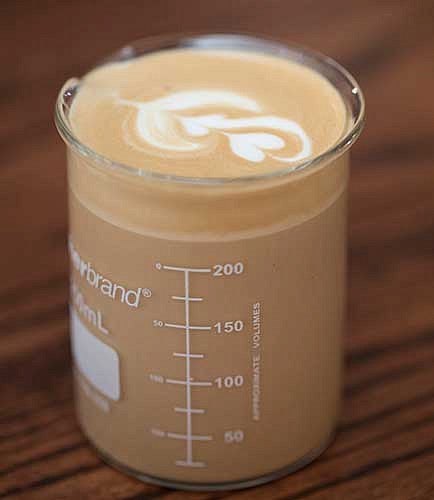
Gateway Beverage
For most of us, it’s not easy to understand how scientific research affects our daily lives. Not everyone gets it, and Christopher Hendon gets that. But he also gets espresso, his favorite medium for science.
For Hendon, coffee is a way to introduce anyone and everyone to chemistry. The ubiquitous bean is part of everyday life—something everyone can relate to and experiment with.
“Coffee’s an excellent way to engage a general audience,” he says. “The more people understand how chemists—and all scientists—do their work, the better. Coffee research has a tangible outcome, and they can relate to that. Even if they criticize you, they’re more engaged than if you just did your work and they never heard about it at all.”
Find What Inspires You


